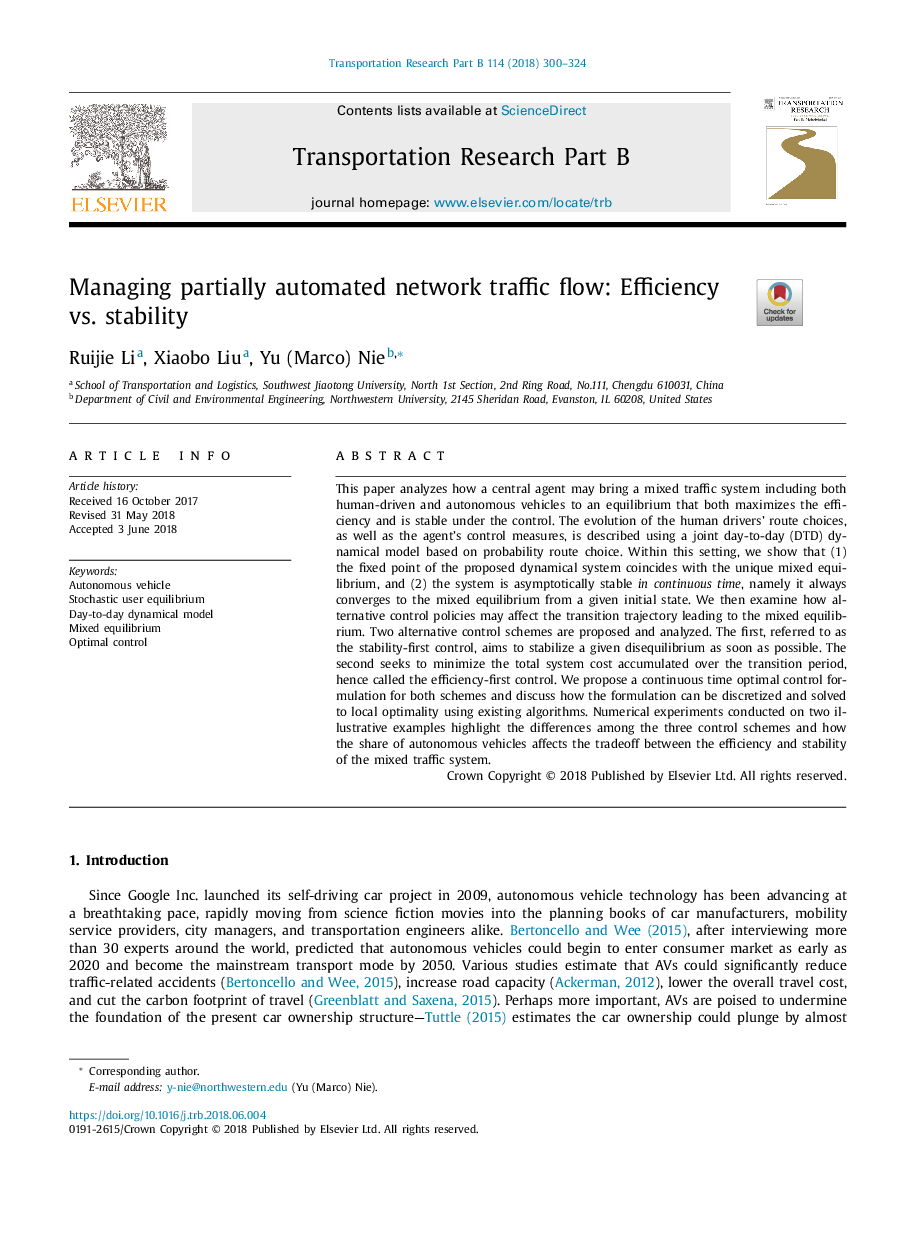| Article ID | Journal | Published Year | Pages | File Type |
|---|---|---|---|---|
| 7538958 | Transportation Research Part B: Methodological | 2018 | 25 Pages |
Abstract
This paper analyzes how a central agent may bring a mixed traffic system including both human-driven and autonomous vehicles to an equilibrium that both maximizes the efficiency and is stable under the control. The evolution of the human drivers' route choices, as well as the agent's control measures, is described using a joint day-to-day (DTD) dynamical model based on probability route choice. Within this setting, we show that (1) the fixed point of the proposed dynamical system coincides with the unique mixed equilibrium, and (2) the system is asymptotically stable in continuous time, namely it always converges to the mixed equilibrium from a given initial state. We then examine how alternative control policies may affect the transition trajectory leading to the mixed equilibrium. Two alternative control schemes are proposed and analyzed. The first, referred to as the stability-first control, aims to stabilize a given disequilibrium as soon as possible. The second seeks to minimize the total system cost accumulated over the transition period, hence called the efficiency-first control. We propose a continuous time optimal control formulation for both schemes and discuss how the formulation can be discretized and solved to local optimality using existing algorithms. Numerical experiments conducted on two illustrative examples highlight the differences among the three control schemes and how the share of autonomous vehicles affects the tradeoff between the efficiency and stability of the mixed traffic system.
Related Topics
Social Sciences and Humanities
Decision Sciences
Management Science and Operations Research
Authors
Ruijie Li, Xiaobo Liu, Yu (Marco) Nie,
